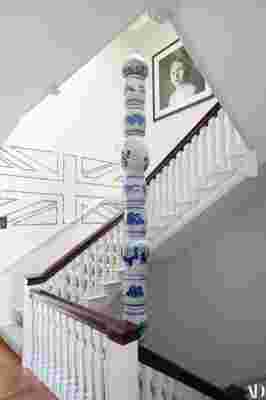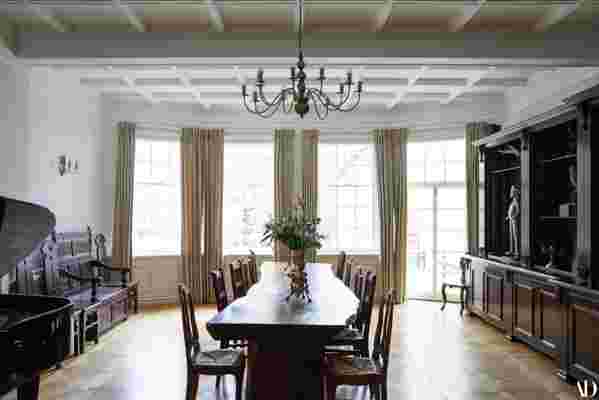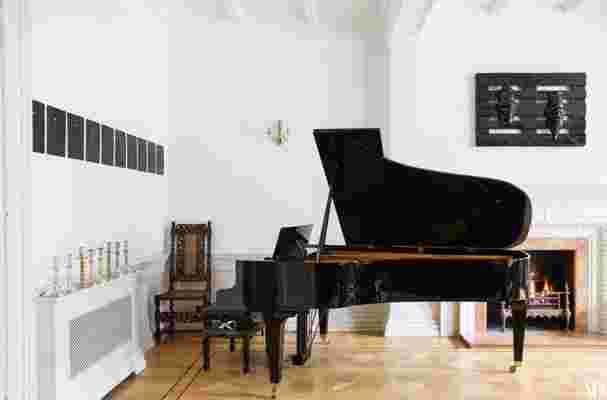Born in Europe and raised in Africa, art dealer Hélène Nguyen-Ban resists categories and descriptions. She gives new dimension to the phrase "doing it all"—from her peripatetic childhood in a Vietnamese-Alsatian family to studying in Paris to her current roles raising a family, running a Paris art gallery, and maintaining homes in London, Paris, and Megève (France). AD visits the art collector-dealer at her equally unconventional brick townhouse in Kensington, in central London. Of her home's location, Nguyen-Ban says, "The three girls can walk to school, and I am strategically located between Saint Pancras [railway station] and Heathrow. As I am in Paris every week, this is very practical."
After a traditional finance-focused education, she began her career in fashion. "This was a way for me to pursue my creative interests and still be in the business world," says Nguyen-Ban, who ended up spending 10 years in the industry before going back to school to study her first love: art. "My collecting began with my first paycheck," she says, "and I still have that first work, which hangs in [my] Paris house." Although her taste has evolved over the years to include a wide spectrum of contemporary artists, "the key for me was Asian art."

In the central stairwell, a Union Jack dynamite-fuse wall drawing, Sic Transit Gloria Mundi , is by Mircea Cantor. Running the entire height of the building is Colonne Pascale by Pascale Marthine Tayou.
The move from Paris to London took place about five years ago when Nguyen-Ban settled on a listed, six-story townhouse with lots of space for her family and art, and large outdoor areas. Being designated a Grade II National Heritage building, protected by the guardians of English architecture, meant that very few modifications could be made to the structure. In compliance, she settled on what she describes as "cosmetic work—I repainted, redid the floors, and not much else." But, at the same time, its well-kept condition was what attracted her to the property. "I tried to preserve the maximum of the original elements," she comments. "To these, I only added a few antiques and my contemporary art."
As a result, the interiors feature furniture and pieces she picked up at various flea markets. The spacious rooms feel somewhat empty, a deliberate choice born of preference. The opposite of cluttered, her aesthetic is minimalist and quiet, giving pride of place to the art. In one room, she has installed two video works by the artist Mircea Cantor. Both run on a loop with no sound and are, in Nguyen-Ban's words, "better than watching football, right?" A recently installed work, also by Cantor, in the central stairwell, is a performance piece and involved lighting dynamite fuses taped to the wall in the shape of the Union Jack flag. The remains cast a beautiful, charred mural.
The monumental sculpture of stacked Chinese jars, which runs floor to ceiling, is by the artist Pascale Marthine Tayou. The African-born Tayou lives and works in Europe and Africa, and his practice addresses issues of the global village and moving constantly between cultures. No coincidence that Nguyen-Ban was drawn to his work—to have Chinese pottery by an African artist running through the spine of her English house. After all, it's the home of a woman who moves seamlessly between cultures every day.


RELATED: A Light-Filled Paris Flat Where Art Plays the Starring Role
